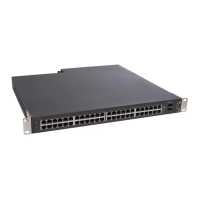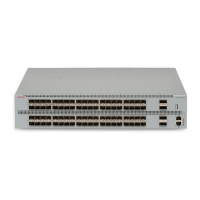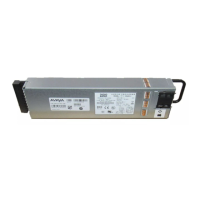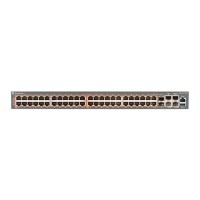1. Connect a terminal to the console port of the switch.
2. Set the terminal protocol on the terminal or terminal emulation program to VT100
and VT100/ANSI.
3. Connect to the switch using the terminal or terminal emulation application.
4. After the Avaya banner is displayed, press CTRL + Y to display the main menu. The
version of the main menu displayed is dependent on whether the switch is part of
a standalone or stacked switch configuration.
Assigning IP parameters using the console menu
This procedure describes the steps used to assign IP parameters using the console menu.
1. From the console menu, select IP Configuration/Setup.
2. Assign an IP address to the switch.
• For a standalone switch, enter a value in the In-Band Switch IP Address field
in dotted-decimal notation.
• For a stack configuration, enter a value in the In-Band Stack IP Address field
in dotted-decimal notation.
3. In the In-Band Subnet Mask field enter the appropriate subnet mask in dotted-
decimal notation.
4. In the Default Gateway field, enter the appropriate default gateway in dotted-
decimal notation.
5. Press CTRL + C to return to the main menu.
Assigning IP parameters using the console menu and ACLI
1. Connect a terminal to the console port of the switch.
2. Set the terminal protocol on the terminal or terminal emulation program to VT100
and VT100/ANSI.
3. Connect to the switch using the terminal or terminal emulation application.
4. After the Avaya banner is displayed, press CTRL + Y to display the main menu.
Procedures for installation of the switch
82 Avaya Ethernet Routing Switch 5000 Series Installation December 2010

